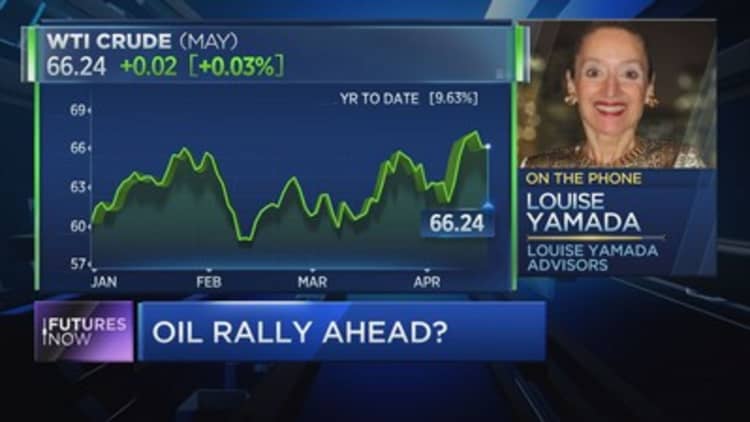
Oil prices rose to their highest level since late 2014 after government data showed U.S. crude stockpiles fell last week and as the market continued to worry about supply disruptions in key fossil fuel-producing nations.
U.S. West Texas Intermediate crude futures ended Wednesday's session up $1.95, or 2.9 percent at $68.47, the best settle since Dec. 1, 2014. The contract hit an intraday high going back to Dec. 2, 2014.
International benchmark also hit hit a new intraday high going back to November 2014. The contract rose $1.90, or 2.7 percent, to end the session at $73.48 a barrel.
Brent's settlement marked its best close since Nov. 26, 2014, the day before OPEC refused to take steps to stop a decline in oil prices, sparking a sharp sell-off that ultimately sent oil prices to 12-year lows.
OPEC has since reversed course, reaching a deal with Russia and other oil producers to cut output by 1.8 million barrels a day starting in January 2017.
The deal, which runs through the end of this year, has nearly shrunk global oil stockpiles to their five-year average. A committee that monitors adherence to the cuts meets in Saudi Arabia on Friday, and the wider group will gather in June to determine whether the agreement should be adjusted.
Some senior Saudi officials are reportedly targeting $80 per barrel oil, and could argue for keeping the production caps in place to achieve that goal.
U.S. commercial crude inventories dropped by 1.1 million barrels in the week through April 13, the U.S. Energy Information Administration reported.
Stockpiles of gasoline also dropped by 3 million barrels, while distillates fuels including diesel declined by 3.1 million barrels.
"It's a bullish report with the across-the-board drawdowns in everything," said John Kilduff, founding partner at energy hedge fund Again Capital.
"There was really strong demand for gasoline, summer-like demand for gasoline," he said.
Gasoline demand was nearly 9.9 million barrels a day.

A rally in recent weeks has been fueled by concerns over geopolitical tension in the Middle East and potential disruptions to oil supply.
An air strike on Syria by the United States, France and the UK stoked fears of conflict with Syrian government allies Russia and Iran, two of the world's biggest oil producers. Rocket attacks by rebels in Yemen on top oil exporter Saudi Arabia have also contributed to oil's geopolitical risk premium.
The market is also waiting to see whether President Donald Trump will reimpose sanctions on Iran as a May 12 deadline approaches.
Meanwhile, production continues to decline in Venezuela, where economic crisis has paralyzed the nation's lifeblood oil industry.
— CNBC's Patti Domm contributed to this story.


